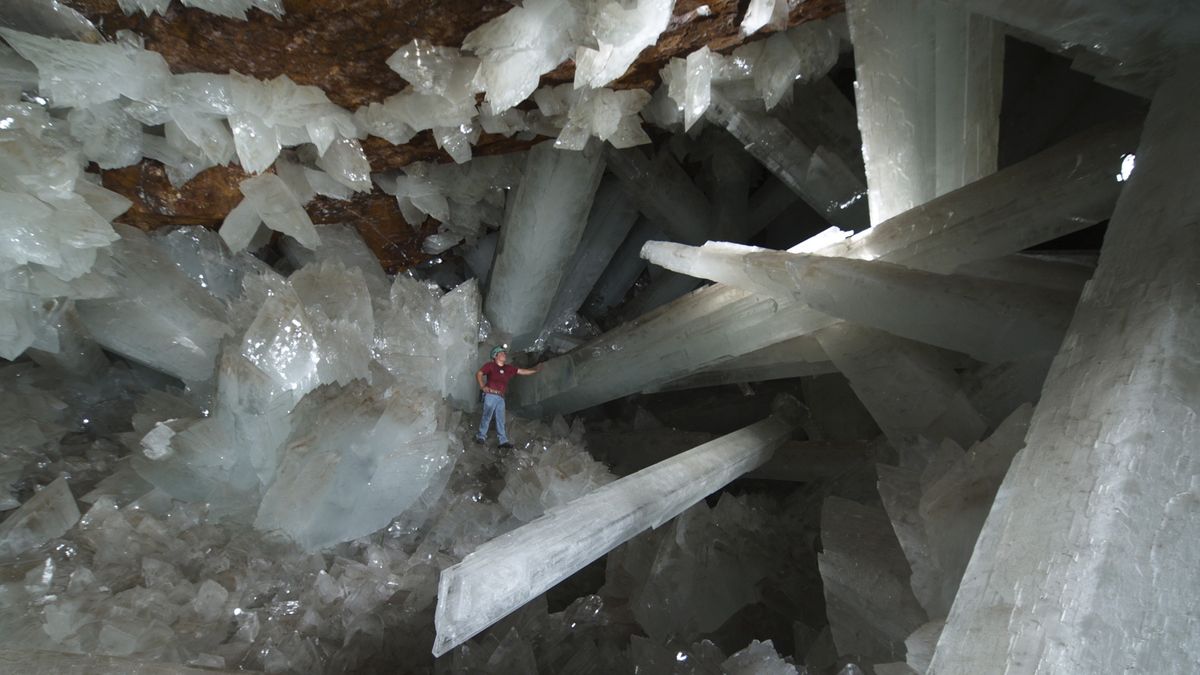The Cave of Crystals is an underground cavern filled with gypsum crystals the size of trees, including some of the largest natural crystals ever found.
The cave is located about 300 meters underground and is connected to a lead, zinc and silver mine in Naica, 105 kilometers southeast of Chihuahua City.
The mine was flooded almost 10 years ago after miners accidentally broke into an aquifer, but the Cave of Crystals is at a higher level, which means the water didn't reach it.
The miners discovered the Cave of Crystals by chance in 2000, while drilling a side tunnel to help ventilate the mine.
When they entered, Live Science reports, they discovered a chamber filled with huge milky white crystals - the largest of which was more than 11 meters long and 1 meter wide.
The crystals are made of selenite gypsum, a sulphate mineral that forms from salts dissolved in groundwater. It is so soft that you can scratch it with your fingernail.
Mining operations in Naica began in 1974 and since then several crystal-filled caves have been discovered - including the Cave of Swords, which is studded from floor to ceiling with dagger-like crystals.
But the Cave of Crystals is by far the largest, with a length of 110 m and a volume of 6000 cubic meters - more than twice the size of an Olympic swimming pool. The cave is shaped like a horseshoe and has been carved out of limestone.

"It's the Sistine Chapel of crystals," geologist Juan Manuel García-Ruiz, from the Consejo Superior de Investigaciones Científicas (CSIC) and the University of Granada in Spain, who studied the cave, told National Geographic in 2007.

The cave is located on a fault line and above a magma reservoir buried 3 to 5 km below Naica. About 26 million years ago, magma reached this chamber, forcing mineral-rich water up through cracks in the rock.
The scalding water opened caves in the limestone and formed deposits that crystallized over thousands of years as the magma slowly cooled.
Later, temperatures stabilized at around 58°C, creating the ideal conditions for gypsum crystals to grow to gigantic proportions from a mineral called anhydrite.
The conditions in the cave are ideal for crystals, but deadly for humans. The temperatures remained the same after the water was drained, but the humidity reached over 90%.
With this level of humidity, sweat has no cooling effect on the body. Consequently, people need adequate protection to stay in the cave for more than 10 minutes.
Walking among the crystals is also dangerous, because the beams are slippery with condensation and are extremely slippery.






